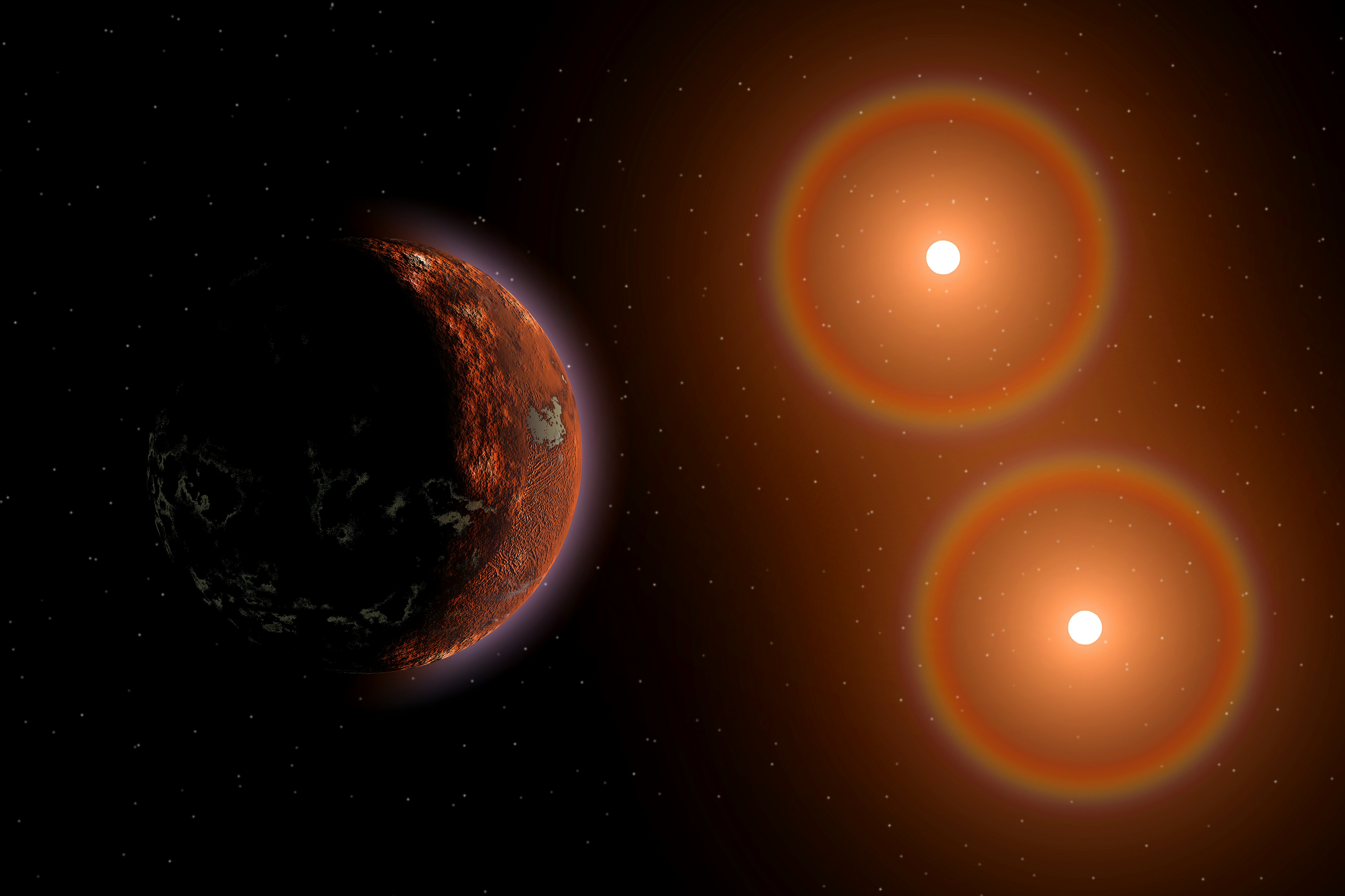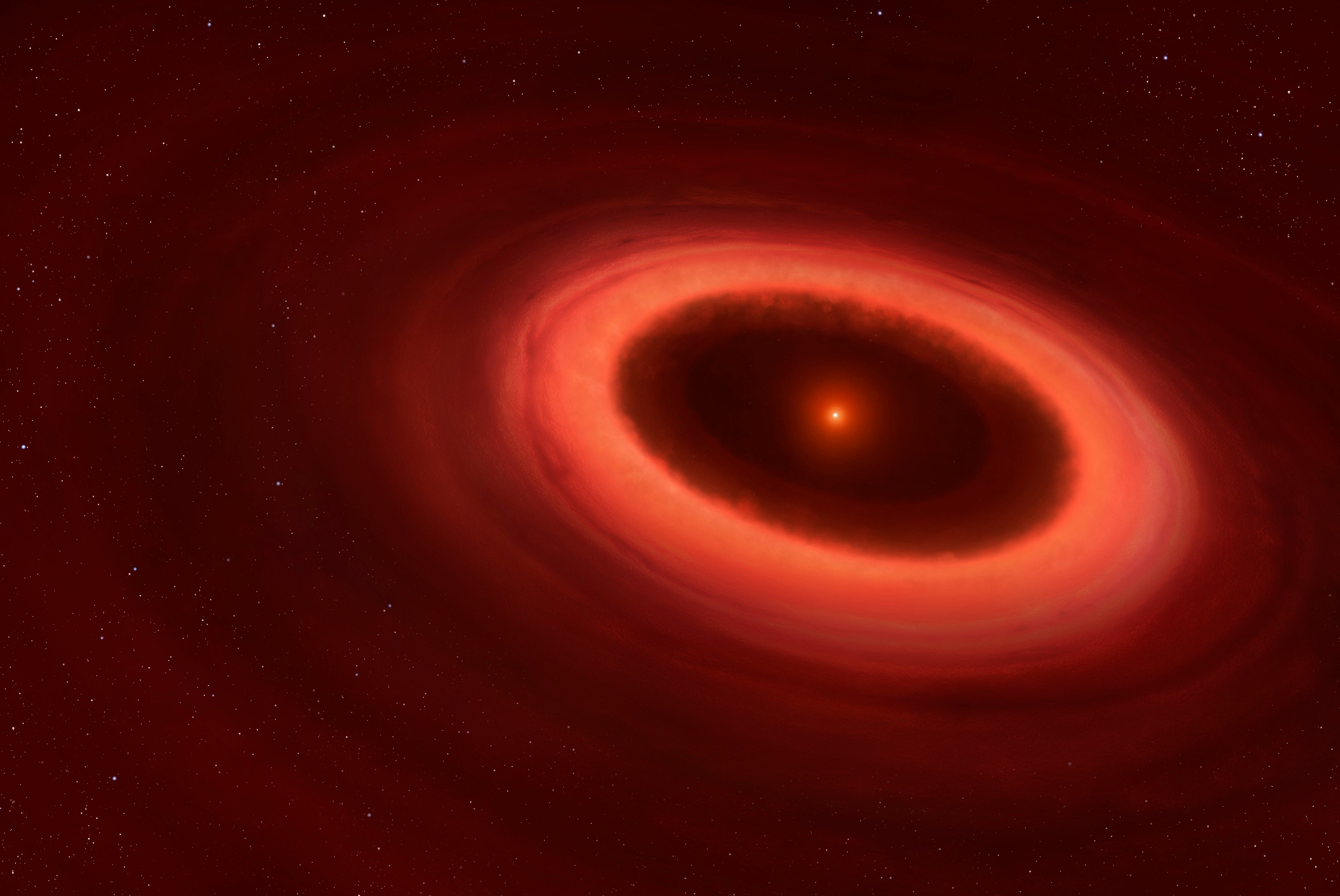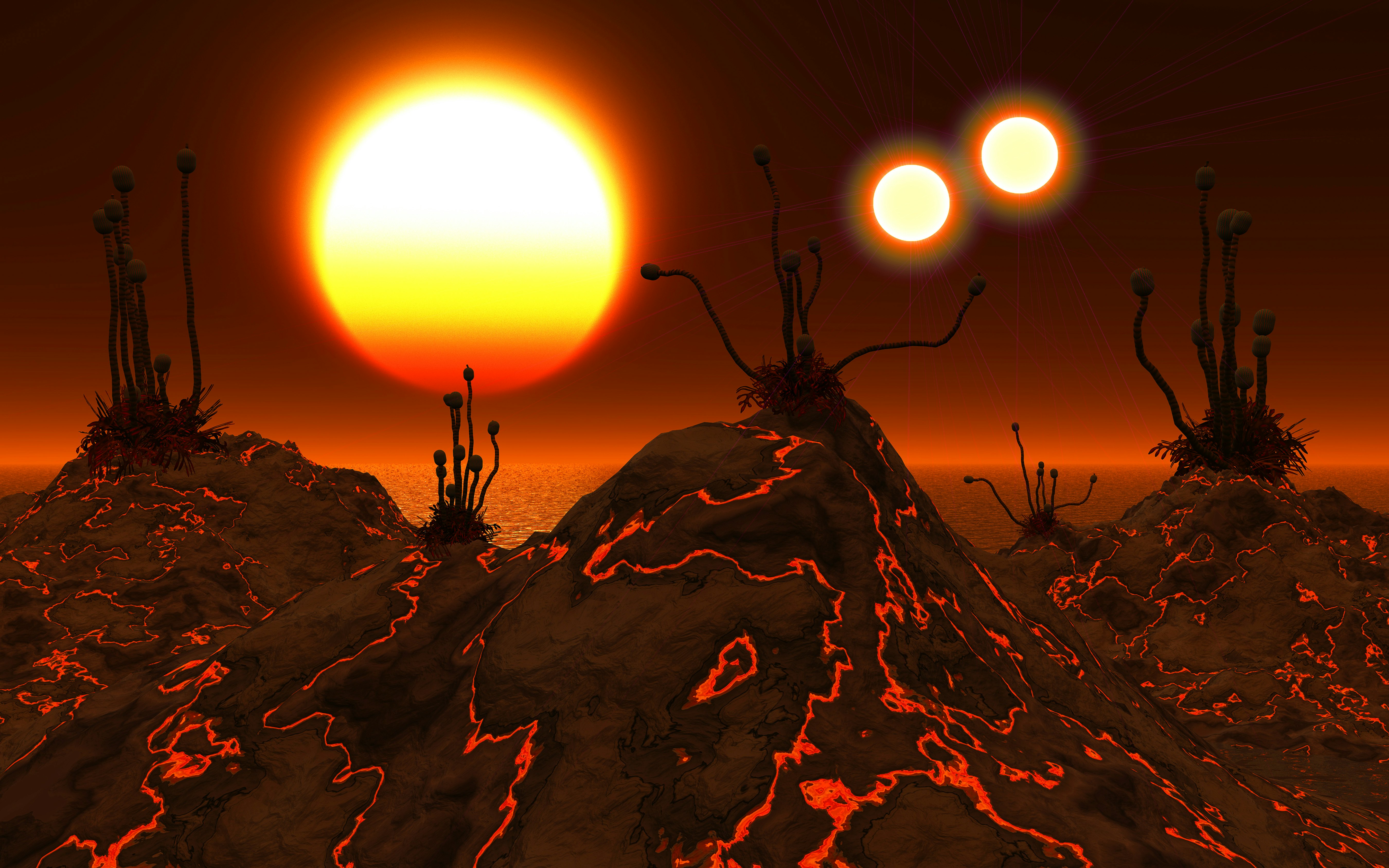
Planets like Proxima Centauri b experience tides hundreds of times stronger than ones that move Earth’s oceans twice a day. The force of those tides also tugs on the planet’s atmosphere, but a recent simulation found that the tidal pull of Proxima Centauri b’s host star doesn’t have much impact on weather or long-term climate.
Instead, weather patterns on Proxima Centauri b, and on other planets in the habitable zones of red dwarf stars, seem to be ruled by the fact that half the planet is in perpetual daylight while the other half is in an unending night.
What’s New — Red dwarf stars like Proxima Centauri and TRAPPIST-1 are smaller, dimmer, and cooler than our Sun. Worlds like Proxima Centauri b and TRAPPIST-1e feel the gravitational pull of their stars much more strongly than we feel the tidal effect of our Sun, because they’re much closer. Here on Earth, the Moon exerts more tidal force than the Sun — also because it’s so much closer. And tides don’t just pull on the ocean; they can also move air.
But although the Moon’s tidal pull shifts our oceans noticeably twice a day, it doesn’t have much impact on our atmosphere. What little air movement the Moon could claim credit for is almost completely overwhelmed by the effect of heat, or the lack of it. Hot air expands and rises, creating areas of lower atmospheric pressure; cool air compresses and sinks, creating areas of higher atmospheric pressure. Air tends to move from areas of higher pressure to areas of lower pressure — we call that wind.
On worlds orbiting red dwarf stars closely enough to be potentially habitable, the tidal pull on the atmosphere may be up to 500 times stronger than what Earth’s atmosphere experiences. Proxima Centauri b may actually be close to the maximum tidal force it’s possible for a planet to endure and still maintain a solid surface. But even Proxima Centauri b’s extreme tides don’t have much effect on its weather or its climate, according to a recent simulation study by McGill University planetary scientist Thomas Navarro and his colleagues.
“Gravitational tides on [planets orbiting red dwarf stars] only moderately impact their surface meteorology, with little to no impact on their climate,” they wrote in their recent paper.
Navarro and his colleagues built a digital model of an Earth-like planet orbiting a low-mass star like Proxima Centauri, then tested it with different atmospheric compositions and other conditions. As it turned out, the weather on Proxima Centauri b is mostly shaped by the fact that the planet is tidally locked to its star. In other words, the planet rotates once every time it orbits the star, so the same side of the planet is always facing directly toward the star, in constant daylight.

Digging Into The Details — Navarro and his colleagues built on the work of previous studies, which had modeled the atmospheres of tidally-locked planets around stars like Proxima Centauri. But nobody had focused on the effect of tides on the atmosphere before, so the team incorporated tides into their new model to see what might look different. The answer turned out to be: not much, but exoplanets orbiting red dwarfs still have some wild weather.
It’s extremely windy, for one thing. The permanent dayside is constantly heated by the star, which creates an area of low pressure as the hot air expands and rises. Wind rushes in from the dark, cool nightside at 35 to 70 kilometers per hour, according to the models. That means the entire surface of the planet is usually experiencing something between a strong breeze and a strong gale, always blowing toward the same spot on the dayside.
“You have all these winds coming all the time from the same direction,” Navarro tells Inverse. “The winds are created by low pressure that’s a direct consequence of permanent heating.”
And that dayside spot, directly beneath the dim red star in the sky, is probably perpetually stormy. That’s what you’d expect from a low-pressure zone here on Earth, or even on a vastly different world like Jupiter. Navarro and his colleagues model also suggest that a low-pressure zone would spawn thick cloud cover over a huge swath of the dayside, keeping things shadier than you’d expect something called a “permanent dayside” to be.
Why It Matters — Previous studies have modeled how tidal locking would shape a planet's weather, but this one confirms that it's the main effect involved in shaping the large-scale weather patterns on exoplanets around red dwarf stars. And that’s extremely important to astrobiologists, because most of the potentially habitable exoplanets we’re likely to find will be orbiting red dwarf stars.
For one thing, about three-quarters of the stars in our galaxy are red dwarfs. Low mass stars seem to form more often than more massive ones, and they also survive much longer; that gives red dwarfs a definite demographic advantage.

And potentially habitable exoplanets around these small stars are easier for planet-hunters to find than ones orbiting bigger, brighter stars. The habitable zone of a red dwarf — the region around a star where temperatures are right for liquid water to exist — huddles much closer to the star than the habitable zone in our Solar System, which begins roughly at the orbit of Venus and ends just outside the orbit of Mars. And if you’re looking for a small planet, it’s easier to see the closer it is to its star.
What’s Next — Understanding the conditions on these worlds is important if we want to understand how and where life might form — and thrive.
Of course, that assumes that Proxima Centauri b, or any other Earth-like world around a red dwarf, actually has an atmosphere. Many red dwarf stars are notoriously volatile, prone to emitting massive bursts of radiation and charged particles out into space. That kind of stellar weather could strip the atmosphere from a nearby planet and spell very bad news for alien life.
Several sets of astronomers plan to use the James Webb Space Telescope to study these exoplanets over the next several months. They’ll try to measure the atmosphere of Proxima Centauri B, investigate the atmospheres of several TRAPPIST-1 worlds, and find out whether a handful of other red dwarf exoplanets even have atmospheres.







